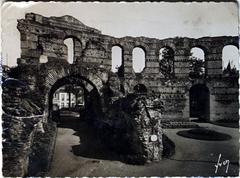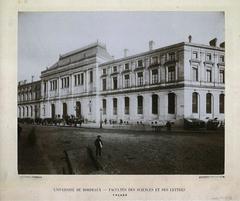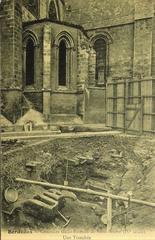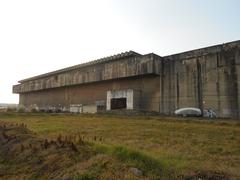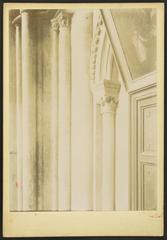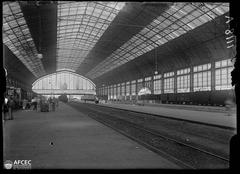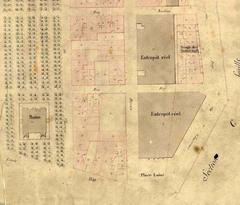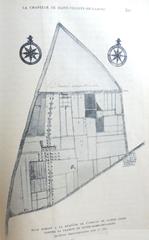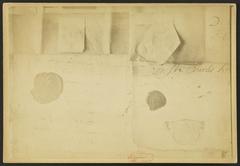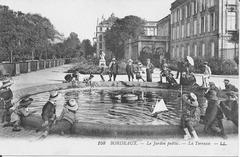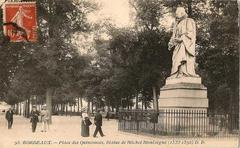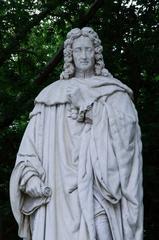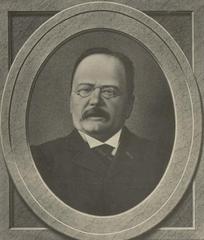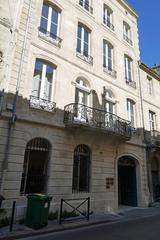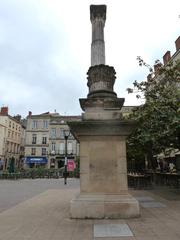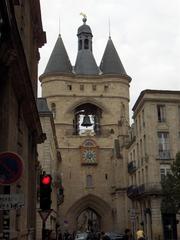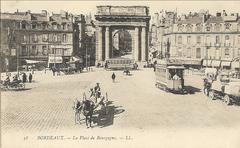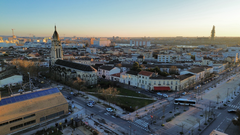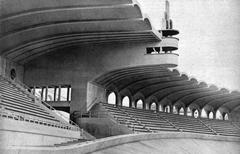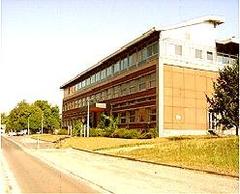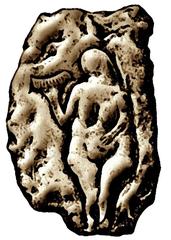Temple du Hâ Visiting Hours, Tickets, and Historical Significance in Bordeaux
Date: 04/07/2025
Introduction to Temple du Hâ in Bordeaux
Nestled in Bordeaux’s historic center, the Temple du Hâ is a landmark of religious heritage, architectural distinction, and living community spirit. Whether you’re searching for “Temple du Hâ visiting hours,” “Temple du Hâ tickets,” or “Bordeaux historical sites,” this guide presents all you need to know for a memorable visit. The temple’s Baroque façade and Protestant interior illustrate centuries of spiritual evolution, from its 17th-century origins as a Catholic chapel to its 19th-century transformation into a Protestant place of worship. Today, it stands as a symbol of Bordeaux’s journey through religious conflict, reconciliation, and enduring tolerance (bordeauxcentreville.epudf.org; fr.wikipedia.org).
The Temple du Hâ’s harmonious Baroque façade, crafted in local limestone, contrasts with its neoclassical, unadorned interior—an architectural testament to Protestant simplicity. The temple is also renowned for its historic pipe organ, enriching both worship and the city’s cultural calendar (orgue-aquitaine.fr). Its central location, near landmarks like the Cathedral of Saint-André and Place de la Bourse, makes it an accessible highlight for visitors exploring Bordeaux’s UNESCO World Heritage-listed core (Guide Bordeaux Gironde).
This comprehensive article details the Temple du Hâ’s history, architecture, visitor information, and tips for making the most of your experience.
Historical Context and Evolution
Origins and Architectural Heritage
The Temple du Hâ stands on a site historically linked to the Fort du Hâ, a 15th-century fortress built by Charles VII to reinforce royal authority after the Hundred Years’ War. While only two towers of the original fort remain (Guide Bordeaux Gironde), the temple itself was established in the early 17th century as a Catholic chapel and later became a prominent center of Protestant worship in the 19th century. Its evolution reflects periods of religious persecution, gradual tolerance, and eventual recognition of Protestant rights in France (Mapcarta).
Protestantism in Bordeaux
Bordeaux was a major center for the Protestant Reformation, particularly Huguenot activity, in the 16th century. Following the revocation of the Edict of Nantes, Protestants faced severe repression until the 19th century, when religious freedoms were restored and worship at the Temple du Hâ resumed (bordeauxcentreville.epudf.org).
Architectural Features
Exterior Design and Façade
The temple’s Baroque façade, attributed to Henri Roche, features a tripartite layout with three pediments, three openings, and three niches (temples.free.fr; m.bordeaux.fr; monnuage.fr). Originally adorned with statues—removed during the Revolution—the façade exemplifies measured grandeur and the dignified restraint typical of Bordeaux’s religious architecture.
Interior Layout and Materials
Inside, a single-nave structure with a barrel-vaulted ceiling emphasizes openness and clarity (orgue-aquitaine.fr). The 1751 post-earthquake reconstruction preserved the original proportions while reinforcing the building. The warm-toned limestone walls and rectangular plan reflect the Reformed emphasis on congregational participation and scriptural focus (fr.wikipedia.org).
Key Interior Features
- Nave and Seating: Rows of wooden benches support communal worship, while the absence of side chapels or ornate decoration underscores Protestant simplicity.
- Chancel and Pulpit: A central, elevated wooden pulpit, added in the 19th century, reflects the centrality of scripture in Reformed tradition (bordeauxcentreville.epudf.org).
- Balustrade and Gallery: The rear gallery with original woodwork offers additional seating and historical character.
- Former Baroque Retable: Once gracing the Catholic altar, the elaborate retable now resides in the church of Pessac, marking the temple’s layered religious history.
The Organ: Musical and Architectural Highlight
The 1883 Gaston Maille pipe organ—expanded in 1969 and restored in 1994—boasts 19 stops, two manuals, and more than 1,000 pipes. Its oak case and visual symmetry echo the temple’s tripartite design (orgue-aquitaine.fr). The organ is central to both worship and public concerts.
Lighting and Atmosphere
Natural light streams through the main façade and nave windows, creating a tranquil, contemplative atmosphere. The absence of stained glass is typical of Protestant spaces, focusing attention on the spoken word (fr.wikipedia.org).
Religious and Cultural Significance
Worship and Community
Affiliated with the United Protestant Church of France, the Temple du Hâ is an active center for worship, hosting Sunday services, baptisms, weddings, funerals, and community outreach programs. Its inclusive liturgy and educational initiatives reflect Reformed values and civic responsibility (bordeauxcentreville.epudf.org).
Symbol of Religious Tolerance
The temple’s enduring presence near other major religious sites—such as the Cathédrale Saint-André and the Synagogue de Bordeaux—underscores Bordeaux’s modern religious pluralism and history of overcoming sectarian conflict (Guide Bordeaux Gironde).
Heritage and Civic Role
The temple contributes to Bordeaux’s urban identity, participates in major cultural events like the European Heritage Days, and collaborates with local institutions to host concerts, lectures, and exhibitions.
Visitor Information
Location and Accessibility
The Temple du Hâ is centrally located at 32 Rue du Hâ, 33000 Bordeaux, easily accessible via tram (lines B and C, stops at Quinconces or Hôtel de Ville) and bus. Paid parking is available nearby, though public transport is recommended during busy periods (bassinscathos.fr).
The temple is wheelchair accessible, with street-level entrances, designated seating, accessible restrooms, and a magnetic induction loop for hearing-impaired visitors.
Visiting Hours
- Monday to Saturday: 10:00 AM – 6:00 PM (Check ahead for any changes during holidays or special events)
- Sunday: Open for worship services at 10:30 AM; visitor access may be limited during services (bordeauxcentreville.epudf.org)
Tickets and Entry
Entry is free for individual visitors and worshippers. Concerts or special events may require tickets or a suggested donation; check the official website for details.
Guided Tours and Events
Guided tours are occasionally offered during heritage days or by arrangement with the Bordeaux Tourist Office. The temple also hosts regular concerts, lectures, and cultural events. For schedules, visit the official calendar or contact the temple in advance.
Photography
The baroque façade and serene interior are popular photographic subjects. Note that photography may be restricted during services or events; always request permission before photographing inside.
Visitor Experience
- Hospitality: Visitors are welcomed with coffee and madeleines before Sunday services.
- Spiritual Activities: Monthly Holy Communion, meditative sessions (“Temps de Respiration Spirituelle”), and participatory worship (“Cultes Autrement”) create a vibrant spiritual life (bordeauxcentreville.epudf.org).
- Community Engagement: The congregation is known for its warm hospitality, engaging newcomers and fostering a sense of belonging (bassinscathos.fr).
- Nearby Attractions: Combine your visit with nearby museums, the Grand Théâtre, and the Place de la Bourse for a complete Bordeaux experience (visitsights.com).
Safety and Etiquette
Bordeaux’s city center is generally safe, but visitors should dress modestly and behave respectfully during services. Always seek permission before photographing services or events.
Frequently Asked Questions (FAQ)
Q: What are the Temple du Hâ visiting hours?
A: Monday to Saturday, 10:00 AM–6:00 PM. Sunday access is limited to worship services at 10:30 AM.
Q: Is there an entrance fee?
A: No, entry is free. Some concerts or events may require tickets or a donation.
Q: Are guided tours available?
A: Yes, during special events or by arrangement. Check the official website for details.
Q: Is the temple accessible for people with disabilities?
A: Yes. The entrance, restrooms, and seating are adapted for accessibility.
Q: How do I get there by public transport?
A: Tram lines B and C stop nearby at Quinconces or Hôtel de Ville; several bus lines also serve the area.
Q: Can I take photographs inside the temple?
A: Photography may be restricted during services or concerts. Always ask for permission.
Visuals and Media
- View map — Interactive map of the temple’s location and nearby attractions.
Summary and Visitor Recommendations
The Temple du Hâ is more than a historical monument; it is a vibrant center of faith, culture, and community in Bordeaux. Its Baroque façade, luminous interior, and celebrated pipe organ embody the city’s religious and architectural diversity. Visitors are invited to attend services, explore its history, and experience the welcoming spirit of Bordeaux’s Protestant community. For an enriched visit, check the latest hours, event schedules, and consider combining your visit with other nearby landmarks. Download the Audiala app for audio guides and updates on Bordeaux’s cultural events.
Sources and Further Reading
- Guide Bordeaux Gironde
- FranceRent
- BordeauxCentreVille EPudF
- Orgue Aquitaine
- Bassins Cathos
- MonNuage
- French Wikipedia
- Lost in Bordeaux
- visitsights.com
